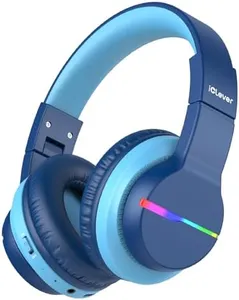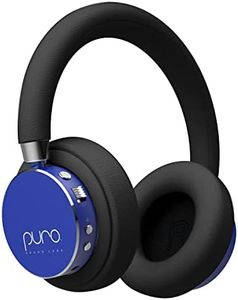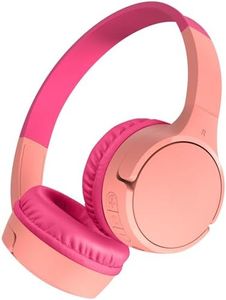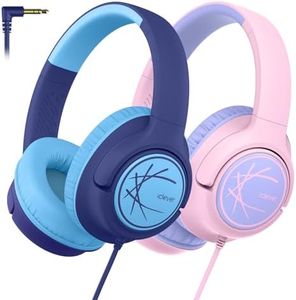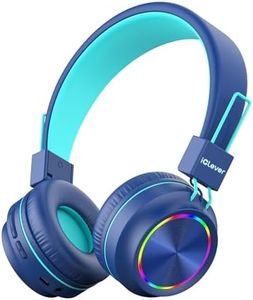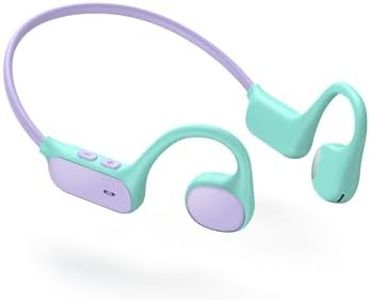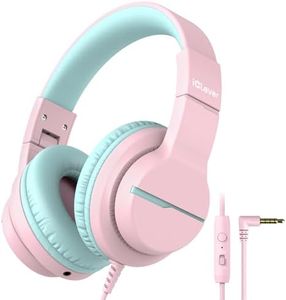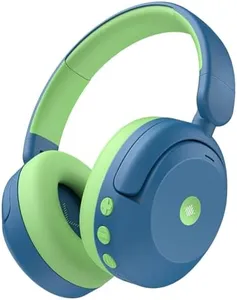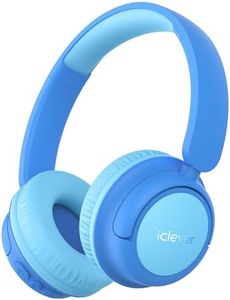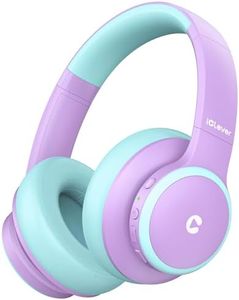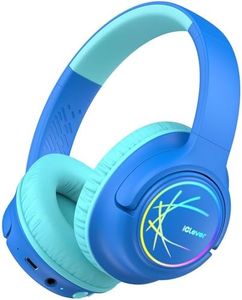We Use CookiesWe use cookies to enhance the security, performance,
functionality and for analytical and promotional activities. By continuing to browse this site you
are agreeing to our privacy policy
10 Best Kids Headphones For Airplanes
From leading brands and best sellers available on the web.Buying Guide for the Best Kids Headphones For Airplanes
Choosing the right headphones for kids to use on airplanes is all about balancing comfort, safety, and functionality. Air travel can be loud and long, so headphones that are comfortable and safe for little ears can help make the journey easier for both kids and adults. When shopping for this category, it’s important to keep the environment in mind: airplane cabins are noisy, and kids’ attention spans and sensitivity to sound levels vary. The headphones need to be easy for kids to use, durable enough to handle travel, and should protect their hearing while allowing them to enjoy music, movies, or games.Volume LimitingVolume limiting is a feature built into kids’ headphones to prevent the audio from exceeding safe volume levels. It's important because children's ears are more sensitive to loud music, and prolonged exposure can lead to hearing damage. Most kids’ headphones cap the volume at 85 decibels, which is generally considered safe. However, on airplanes, background noise may make this feel quiet, so some models allow slightly higher limits or a parental override. For most children, the 85-decibel limit is ideal for general use, but if your child struggles to hear on a plane, you may want headphones with a selectable or slightly higher limit—always supervise to ensure safe listening habits.
Fit and ComfortFit and comfort refer to how well the headphones sit on the child’s head and ears and how comfortable they feel over time. Headphones that are too tight can cause discomfort, while those that are too loose may slip off. Look for features like adjustable headbands, cushioned ear pads, and lightweight designs. Younger children generally need smaller and lighter headphones, while older kids might prefer roomier, over-ear pads. Think about the length of your flights—if your child will wear headphones for hours, prioritize padding and adjustability to keep them comfortable.
DurabilityDurability means how well the headphones withstand rough handling, which is likely when traveling with kids. Sturdy materials, reinforced cables, and flexible bands help headphones survive frequent packing and possible drops. Some headphones are made with bendable materials or have tangle-free cords for added strength. Younger kids may need more robust, flexible models that can take a bit of bending, while older kids may be able to handle less rugged, more stylish designs. Consider how careful (or not) your child tends to be!
Noise IsolationNoise isolation is the ability of headphones to block out external sounds, helpful in a noisy airplane environment. This is achieved by the design of the ear cups, typically over-ear or on-ear styles that fit snugly and block noise passively. Good isolation lets kids hear their audio without turning the volume up to unsafe levels. For short flights or when your child is sensitive, mild isolation may be enough. For long flights or very noisy planes, better-isolating headphones will help keep the experience pleasant and safe.
Wired vs. WirelessThis spec refers to whether the headphones connect to devices by a cable (wired) or use Bluetooth (wireless). Wired headphones are reliable and don’t require charging, which is handy for flights with in-seat entertainment, but the cord can tangle or get in the way. Wireless headphones give freedom to move and reduce clutter, but they need to be charged and may not always connect to airplane entertainment systems without an adapter. If your child mainly listens to tablets or phones with Bluetooth, wireless can be very convenient. For traditional airplane screens or if you don’t want to worry about battery life, choose wired headphones.
PortabilityPortability is about how easy it is to carry and store the headphones. Foldable designs, carrying cases, or compact styles make it simpler to pack them in your carry-on or your child’s backpack. Bulkier headphones can provide more comfort and sound quality but take up more space. If your travel gear is already full, look for slimmer, foldable options that still provide necessary comfort and safety features.


